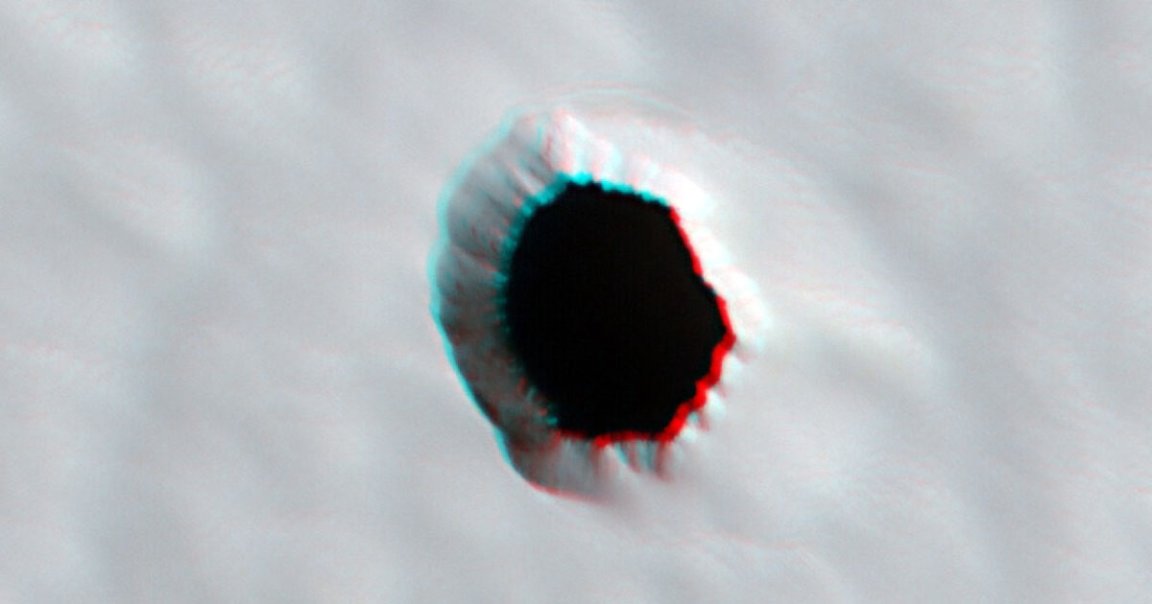
Dark Spot
NASA’s Mars Reconnaissance Orbiter (MRO) has discovered another intriguing formation on the planet’s barren surface.
As spotted by Universe Today, the spacecraft captured this image of a satisfyingly circular pit — and what its dark, yawning entrance leads to remains a question high on the minds of Mars scientists.
The image, “acquired to determine if any underlying void … and associated faults” were in the region, was taken with the High-Resolution Imaging Science Experiment (HiRISE) camera, a powerful lens capable of detailing the Martian surface in both visible and near-infrared light.
Nicknamed “the little pit,” the formation only measures a few yards across, according to the HiRISE lab, and resides in the enormous shadow of the Arsia Mons, a shield volcano that spans nearly over 270 miles in diameter and stands at nearly 12 miles tall (one of the largest known in the entire solar system).
But despite their best efforts, scientists can only guess as to how exactly holes like this one were formed, or what may be lurking in their depths — let alone whether they could make for a suitable shelter for future astronauts.
Holed Up
The nearby Arsia Mons volcano is part of a trio of almost perfectly aligned — and long dormant — volcanoes in a region called the Tharsis bulge, a flat volcanic plateau near the planet’s equator.
Given that the pit was found in a region of historic volcanic activity, it’s possible that it leads to a network of lava tubes, underground channels where molten rock once tunneled its way through the Earth. In fact, HiRISE has imaged pits that lead to these subterranean formations, known as skylights, in the past.
Martian lava tubes interest scientists for a number of reasons. For one, they’re remnants of the planet’s now seemingly bygone days of geological activity. However, some research challenges this assumption that Mars is a ‘dead’ planet, and suggest that it’s still volcanically active.
The tubes’ other intriguing aspect to scientists is their potential to be used as shelter by astronauts exploring the planet, perhaps needing to quickly duck out of a vicious dust storm.
Taking that a step further, some research has shown that these tubes are far larger than ones on Earth and could house a long-term base on the planet, where astronauts would be shielded from harsh cosmic radiation.
Of course, we’ll have to get an up-close look at these underground networks before we can definitively say whether they’re viable human habitats or not. So far, Martian rovers don’t have the capabilities to go down there, but some scientists are devising techniques to make it happen.
More on Mars: Mars’ Moon May Not Be What We Think, Scientists Claim